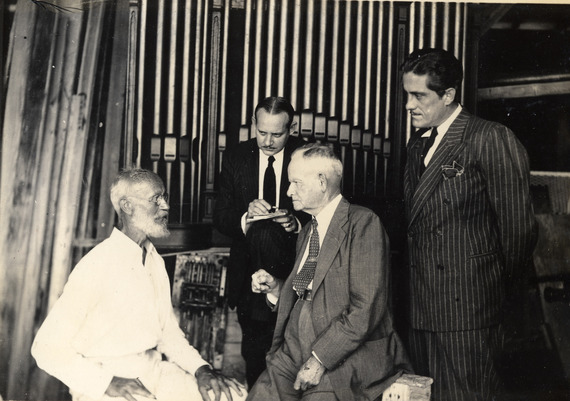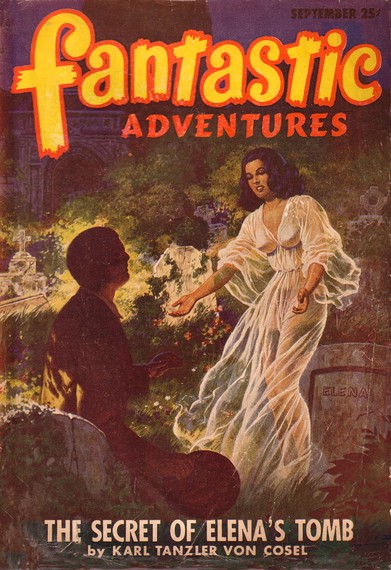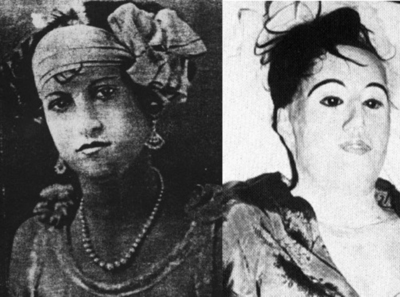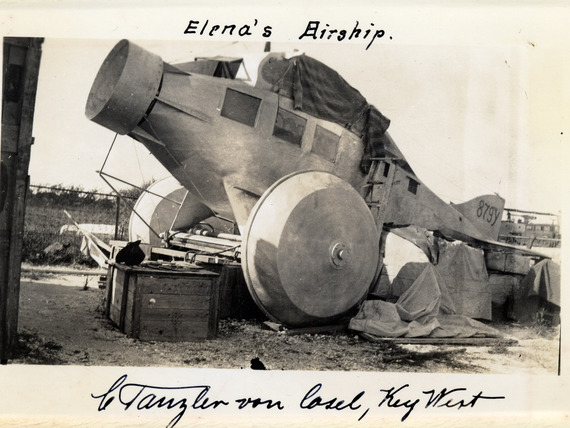The Ruskin School of Art offers a unique opportunity to those with wish to study and explore human anatomy with highly regarded artists and anatomists. The Ruskin remains the last art school in Europe to incorporate such an in depth study of anatomy within its teaching.
Art and Anatomy 2016 - Two Courses
Dr Sarah Simblet and Eleanor Crook will together teach and guide students on 2 seven day courses in the summer of 2016. Both courses will offer the same programme.
Art and Anatomy Course One: Monday 18th - Sunday 24th July 2016
Art and Anatomy Course Two: Monday 12th September - Sunday 18th September 2016
The programme has been developed around Sarah’s best selling book,
Anatomy for the Artist, Dorling Kindersley. The course covers aspects of human anatomy, its drawing and history, and continues to be highly regarded and very successful.
This will be the fifth year of the Art and Anatomy course and a wide variety of artists have benefited from its unique programme - sixth formers, medical artists and students, professional and amateur artists of traditional and contemporary practice. You will take part in intensive workshops, lectures and group discussions on human anatomy, with time for personal studio work.
Consistently interesting and beneficial and I very much enjoyed the presentations.' Art and Anatomy participant, 2014.
‘This is without a doubt the most informative, exciting and challenging short course I have taken for art. The tutors are friendly and diligent making this an unmissable experience for budding artists’ Art and Anatomy participant, 2013
Participants need to bring their preferred drawing materials and the Ruskin will provide easels, paper, a mounted skull and torso armature, wire and wax for modelling, and life models.
No academic or artistic criteria is required for attendance on this course. Participants can expect to leave with a portfolio of new work, a much wider understanding of the subject explored and a wealth of ideas for future artistic development.
Programme
Day 1 : Structural Drawing
Day 2 : The Skeleton
Day 3 : Musculature
Day 4 : Wax Modelling Head and Neck
Day 5 : Wax Modelling Ecorché (muscle figure)
Day 6 : Personal studio time with tutor
Day 7 : Life Drawing
Charges
Ruskin courses are only available to adults over the age of 16 years.
There are three payment rates available:
- Adult - £980.00
- Oxford University students, staff and alumni (10% discount) - £882.00
- Students (with a current NUS card) and OAPs (5% discount) - £931.00
If you select a discounted booking rate, you will need to present your University alumni/staff card, NUS card, or some form of identification indicating your OAP status at the start of the course.
Head and Neck (Portraiture) Anatomy : Monday 1st - Friday 5th August 2016
For the third year, Eleanor and Sarah will offer a five day course on the head and neck in the summer of 2016. This programme was developed in response to the overwhelming success of the Art and Anatomy course and is a dynamic programme that explores human anatomy in greater depth.
'Studying the anatomy of the head has helped me with my drawing and most importantly my perception of the structure for sculpture' Participant on the Head and Neck course, 2014
An intensive, practical Fine Art course on the anatomy, physiology and expression of the human head, offering specialist lectures in anatomy, forensic facial reconstruction and the art history of portraiture. Studio sessions included drawing the head from life, sculpting facial musculature over a cast skull using wax, visits to museums to look at expressive heads in diverse cultures, and also the making of rapid improvised sculptures using found materials to explore the very essence of human expression and communication through the medium of portraiture.
Programme
Day 1 : Anatomy of the human skull
Day 2 : Muscles of facial expression and wax sculpting over a life size cast
Day 3 : Portrait head sculpting in clayDay 4 : Site visit and studio work
Day 5 : Skull decorating to create a powerful head object
Charges
Ruskin courses are only available to adults over the age of 16 years.
There are three payment rates available:
- Adult - £750.00
- Oxford University students, staff and alumni (10% discount) - £675.00
- Students (with a current NUS card) and OAPs (5% discount) - £712.50
If you select a discounted booking rate, you will need to present your University alumni/staff card, NUS card, or some form of identification indicating your OAP status at the start of the course.
Sculpting the Body : Anatomy, Life Modelling and Écorché : Monday 26th September - Friday 30th September 2016
Sarah and Eleanor will teach you to sculpt the human figure confidently with an understanding of anatomy, designing statue poses, preparing armatures and modelling in clay and wax, culminating in a personal and sophisticated final piece. Eleanor and Sarah will share their expertise in anatomy, materials handling, history of sculpture and figure modelling for an entertaining and intensive 5-day session. You will be able to choose whether to finish your work as a sculpted figure or as an “écorché” (an anatomical muscle figure).
Materials and printed reference will be included.
Programme
Day 1 : Introduction to the skeleton and anatomy of the écorché
Day 2 : Designing a pose and preparing 2 armatures
Day 3 : Clay modelling on an armature and wax modelling on a miniature armature with a life model
Day 4 : Site vist and life modelling
Day 5 : Advance figure modelling with life model
Charges
Ruskin courses are only available to adults over the age of 16 years.
There are three payment rates available:
- Adult - £750.00
- Oxford University students, staff and alumni (10% discount) - £675.00
- Students (with a current NUS card) and OAPs (5% discount) - £712.50
If you select a discounted booking rate, you will need to present your University alumni/staff card, NUS card, or some form of identification indicating your OAP status at the start of the course.
Human Anatomy Teaching Staff
Sarah Simblet is an artist who writes and draws. She is also a broadcaster, lecturer and anatomist with broad research interests in the relationship between art, science and history. She has published three major art reference books with Dorling Kindersley: ‘Anatomy for the Artist’, ‘The Drawing Book’ and ‘Botany for the Artist’ and exhibits her drawings through her books. Sarah contributes to contemporary art shows, festivals and live events and her work is held in national and private collections. She contributes regularly to British, American and international television and radio programmes about science and art, and consults on national exhibitions. She is Tutor in Anatomy at the Ruskin School of Drawing and Fine Art, University of Oxford, a freelance lecturer at the National Gallery London, and Barts and the London School of Medicine and Dentistry, and is an academic member of Wolfson College, Oxford.











































